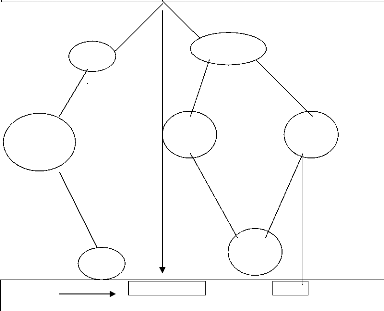Chapter 3
TOURISM INDUSTRY
The Tourism industry is by definition a global industry with a
worldwide network of producers, suppliers, and intermediaries. There are a few
large multinational airlines, tour operators, hotel chain and theme parks. The
tourism enterprise-overwhelming majority is small or medium size business. This
is particularly true in the case of Morocco destination.
GLOBAL CHARACTERISTICS
> Global industry (Tourists= 698 millions, Expenditures = $476
billions) > Air Transport liberalization =New entrants
> Highly competitive
> Capital-intensive industry
> Information based industry
> 9 dominants players: Developed countries (USA, France,
Italy, Spain, United Kingdom, Germany, etc.) with 51% of worldwide total
receipts.
> Less Developed Countries with 12.3 % of total receipts
with China
leading with 23 millions arrivals and 2.3 % of total world
receipts.
CORE CHARACTERISTICS
The industry is by essence an information intensive service
industry that has historically struggled under the weight of fragmented supply
chains, which results in complex and often-inefficient business processing.
Firstly it is heterogeneous and hence relies most exclusively upon
representations and descriptions (information in printed and audiovisual
format) by the travel trade and other intermediaries for its ability to attract
consumers. Unlike durable goods, intangible tourism services cannot be
physically displayed or inspected at the point of sale before purchasing.
Hence, they are normally bought before the time of use and away from the place
of their consumption (Buhalis, 1996). Tourism products are particularly
difficult to describe due to their multi-national and cultural character.
Different cultures, cuisine, customs, constitute the context, whereas the
content is represented by geographical locality, lodging amenities and
attractions/activities. So the information provided through images portrayed by
media, promotional materials and word of mouth is highly critical for provision
and distribution of tourism products. Tourism products require a great degree
of commitment and cannot be replaced, should consumers being not satisfied with
their attributes. Therefore timely and accurate information is the key success
to successful satisfaction of the demand (Buhalis, 1994). Furthermore success
will depend on the quick identification of the consumer needs and the
interaction with prospective clients, by using comprehensive, personalized and
up to date
media to convey this information and to design that specific
product that will satisfy today's more experienced consumer.
MARKET CHARACTERISTICS
Until today's new ITs' driven competitive environment, few
players in the various sectors of the tourist industry understood the
importance of cooperation and networking because of the fragmented nature of
the travel market. In particular DMOs and the travel trade still do not
collaborate adequately to represent their destination globally to foreign
markets. The public sector and private sector are in fact addressing tourists'
needs separately without a system that can enable the creation of a value chain
that strengthens the performance of the destination in a synergic manner. On
the contrary conflicts are created by the dissimilar objectives and interest of
various stakeholders, thus hurting the destination in general.

DMOs Intermediaries
Suppliers
GOV. BODIES
NTO
RTO
Primary Supplier
T.O CRS/
GDS
Travel Agent
Hotel
Chain
Airlines
Figure 1. Stylized View of the Tourism and Travel Market
(Werthner 1993)
Figure 1 represents a functional and structural view of the
tourism and travel market. It differentiates between the supply and the demand
side and the different intermediaries. Links mark the relationship as well as
the flow of information. On the supply side, primary suppliers are hotels,
restaurants, cultural or sport event organizers, etc, which are mostly Small
and Medium Tourism Enterprises (SMTEs). Tour Operators (TOs) can be seen as
product aggregators whereas Travel Agents, act as information brokers,
providing the consumer with relevant information and booking facilities.
Computerized Reservation Systems (CRSs) and Global Distribution Systems (GDSs)
cover airlines offering as well as other products such as packages holidays.
They provide the main links to TOs and to travel agents. Whereas the
intermediaries on the right side are the commercial link between supplier and
consumer, the left side is relevant for destination management and planning
entities such as DMOs (National Tourist Offices (NTOs) and Regional Tourist
Offices (RTO)) that are not involved in the booking process.
Table 5
Pre Internet Tourism
|
Countries
|
Producers
|
Intermediaries
|
Consumers
|
|
D
E
S
T
I
N
A
T
I
O
N
|
Hotels
Restaurants
Airlines
Provisions
Entertainment Recreations
|
Hotel Chain
Tour Operator
Travel Agent
GDS/CRS
Tourism associations
|
Tourists
|
|
DMO
|
|
Source: UNCTAD, 2000
| 


